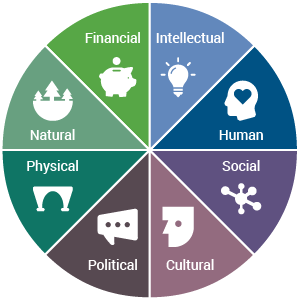The RUPRI Health Panel envisions affordable, accessible healthcare for rural residents through a sustainable health system that delivers high-quality, high-value services. A high-performing rural healthcare system informed by the needs of each unique rural community will lead to greater community health and well-being.
The RUPRI Health Panel recommends a range of alternative approaches to achieve a high-performing rural healthcare system, categorized in the following way:

The most well-known measures of wealth (per capita income, median household income, and GDP), are limited in their ability to comprehensively measure holistic well-being. As a result, the Comprehensive Rural Wealth Framework has emerged as a powerful, comprehensive, and dynamic approach to more fully understand not only the assets and opportunities rural communities and regions hold, but also the challenges they must confront in achieving development and sustainability. In short, this framework seeks to measure what is valued, rather than to value what is measured.
The framework was built upon the earlier work of other scholars and was pioneered by RUPRI. The approach centers around two premises:
Central Premise #1: Comprehensive wealth must be the focus of well-being, whether considering individuals, households, neighborhoods, communities, regions, countries, or the global community.
Central Premise #2: Comprehensive wealth is the stock, or value, of all assets minus liabilities; our well-being depends on the benefits that flow from these various assets. Understanding the distinction between stocks (assets) and flows (benefits received from assets) is essential in understanding the power and importance of the framework.
Learn more about the principles of this framework and the eight capitals or types of wealth.

The Comprehensive Rural Wealth Framework incorporates eight distinct types of assets. When taken together, these capitals represent a robust and comprehensive measure of both tangible and intangible wealth, and they create the basis for assessing current well-being, as well as improving the future.
The Comprehensive Rural Wealth Framework is based on the following eleven principles:
Home | About RUPRI | Key Frameworks
Rural Policy Research Institute
The University of Iowa
College of Public Health
319-384-3857 | info@rupri.org